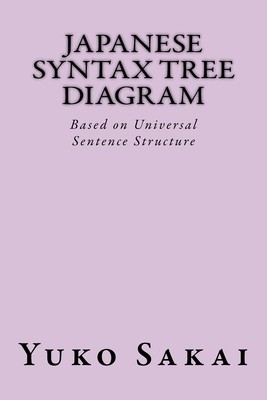
- We will send in 10–14 business days.
- Author: Yuko Sakai
- Publisher: CreateSpace Independent Publishing Platform
- Year: 2017
- Pages: 100
- ISBN-10: 1546555110
- ISBN-13: 9781546555117
- Format: 15.2 x 22.9 x 0.6 cm, minkšti viršeliai
- Language: English
- SAVE -10% with code: EXTRA
Reviews
Description
In Japanese the verb should be at the end of the sentence and the adjective always precedes the noun, but the other word order is free and the omission except verb is acceptable. An interrogative does not have to initiate a wh-interrogative sentence. However, in exchange for the freedom of word order, each noun accompanies the marker or particle. The same can be seen also in Latin or many other languages with noun markers such as cases, prepositions, postpositions etc.Though the grammar differs from language to language, this work shows the universality in the depth of syntactic structures to explain that all our languages are essentially the same.
- Author: Yuko Sakai
- Publisher: CreateSpace Independent Publishing Platform
- Year: 2017
- Pages: 100
- ISBN-10: 1546555110
- ISBN-13: 9781546555117
- Format: 15.2 x 22.9 x 0.6 cm, minkšti viršeliai
- Language: English English
In Japanese the verb should be at the end of the sentence and the adjective always precedes the noun, but the other word order is free and the omission except verb is acceptable. An interrogative does not have to initiate a wh-interrogative sentence. However, in exchange for the freedom of word order, each noun accompanies the marker or particle. The same can be seen also in Latin or many other languages with noun markers such as cases, prepositions, postpositions etc.Though the grammar differs from language to language, this work shows the universality in the depth of syntactic structures to explain that all our languages are essentially the same.


Reviews